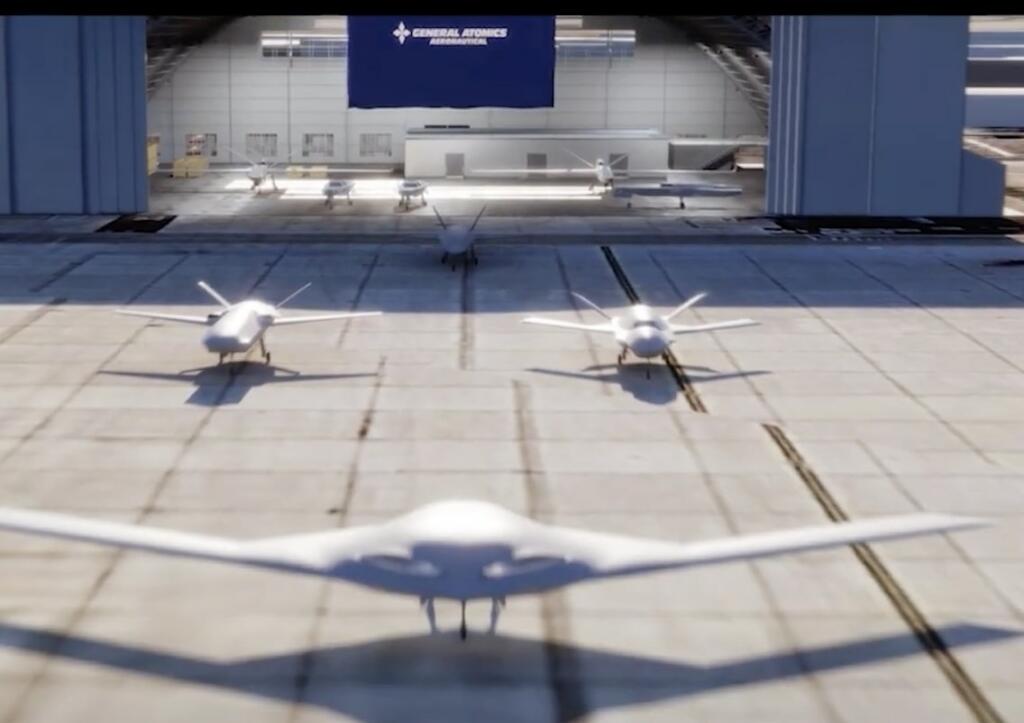The US Air force has requested $5.8 billion to build 1000 to 2000 XQ-58A Valkyrie fighter jet companion drones over the next five years. They can cruise at 550 mph and fly at up to 45,000 feet altitude with a range of 3,000 nautical miles. The NY Times reported each Valkyrie will cost between $3 million and $25 million. This would be a step toward the unmanned collaborative combat aircraft (CCA) drone program. A full CCA drone program will likely cost $30-40 billion. CCAs are meant to function remotely or autonomously and to perform a range of missions, including air-to-air combat, airstrikes, and intelligence-gathering. They will work with piloted aircraft in manned-unmanned teams. Pilots will assign tasks that the CCAs complete on their own.

A formal competition for CCA acquisition could begin late this year. Air Force officials say the first CCAs could arrive in the late 2020s and enter service before the NGAD (next generation air domination) fighter. The NGAD fighter might arrive by 2029-2030 if all goes well with the development program. This is a major assumption that NGAD development would be on schedule as prior fighter programs were not on schedule. However, the US Air Force seems to be going with a build with the technology that is available instead of planning to create the technology while developing the system.
The Air Force has tested various advanced drones for datalink with the F-22s, F-35s, and the Air Force’s Skyborg program. Artificial intelligence-enabled system control unmanned aircraft like the Valkyrie. General Atomics is proposing the MQ-20 Avenger drone. The MQ-20 Avenger has been upgraded with more fuel capacity since 2016. It has a top speed of about 460 mph and a 20-hour flight endurance and can reach altitudes over 50,000 feet. It can carry 6,500 pounds of ordnance, including missiles and precision-guided bombs.
On April 6, 2023, General Atomics Aeronautical Systems (GA-ASI) conducted live, tactical, air combat maneuvers using Artificial Intelligence (AI) pilots to control a company-owned MQ-20 Avenger® Unmanned Aircraft System. Collaborative maneuvers between human and AI pilots were conducted using GA-ASI’s Live, Virtual, Constructive (LVC) collaborative combat aircraft (CCA) ecosystem over a Low Earth Orbit (LEO) satellite communication (SATCOM) provider’s IP-based Mission Beyond Line of Sight (BLOS) datalink.
General Atomics also is developing the Gambit 4 drones, MQ-Next and updated versions of the MQ-9 drones.




The MQ-Next is a drone being developed by General Atomics to replace the MQ-9 Reaper. The MQ-9 Reaper is a medium-altitude, long-endurance (MALE) drone that is used by 10 air forces, including nine NATO members. The MQ-Next is expected to have a 60-hour endurance without refueling. It is being designed to be stealthy and have a hybrid-electric engine.
There will be ducted fans buried inside the fuselage. Serpentine inlets and exhausts will be used where the ducts are twisted inside the aircraft in order to make sure the engine fans aren’t visible, and won’t raise the radar signature. There will be a heavy fuel engine that will drive very efficient generators and motors.
The MQ-9 Reaper is a larger version of the MQ-1 Predator drone, which was used by the U.S. Air Force until 2018. The MQ-9 Reaper is faster, has better sensors, and can carry more munitions. The average cost of an MQ-9 drone is about $30 million. The Reaper — which first began operating in 2007 — costs about $3,500 per flight hour. This is about 8 to 30 times cheaper to fly than other manned fighters and bombers.

Brian Wang is a Futurist Thought Leader and a popular Science blogger with 1 million readers per month. His blog Nextbigfuture.com is ranked #1 Science News Blog. It covers many disruptive technology and trends including Space, Robotics, Artificial Intelligence, Medicine, Anti-aging Biotechnology, and Nanotechnology.
Known for identifying cutting edge technologies, he is currently a Co-Founder of a startup and fundraiser for high potential early-stage companies. He is the Head of Research for Allocations for deep technology investments and an Angel Investor at Space Angels.
A frequent speaker at corporations, he has been a TEDx speaker, a Singularity University speaker and guest at numerous interviews for radio and podcasts. He is open to public speaking and advising engagements.


None of the Air Force drones are as cost effective as $3,000 drones from Australia. The drones are made of cardboard so invisible to radar. Range is 120km. Payload is 2 kg C4 explosive. Manufacturing rate is 30/month. The drones are easy to smuggle because they ship unassembled the size of an extra extra large pizza box. These drones destroyed 5 fighter jets and 3 sophisticated anti aircraft radar systems in one attack on Kursk Airfield.
Russia must move all airfields out of range. The Australian challenge is to increase the range without increasing the radar signature of battery, motor, and electronics. The Ukrainian challenge is to smuggle drones within range of the Kremlin.
While both are “drones” this sort are expended every time so they’re really ordinance like smart missiles or artillery rounds. This sort might be carried and launched by the other sort.
Why hit the Kremlin? Putin is rarely there, hit the airplanes. There was talk they had a much bigger one that carried a 45Kg warhead. Just the picture of the small one, but drones are very secretive.
Anyway,good on the Aussies!